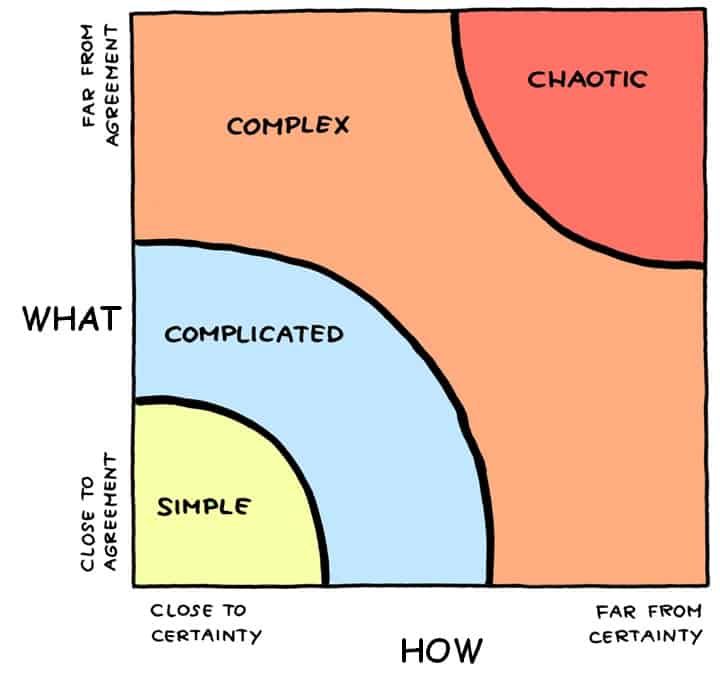When we are planning and prioritising our work it is useful to consider its complexity.
A simplified model of Ralph Stacey’s Complexity Matrix is a useful matrix to help us to broadly categorise ideas, activities or tasks to help us to understand them better, and plan and prioritise them.
We saw the matrix in a previous post about predictive v adaptive planning approaches

Simple – This is work we can easily predict. Elements are usually fixed or fairly static. We are close to agreement on what this is, and how we can deliver it. We can use fixed processes and policies to complete this work.
Complicated – This work is harder to predict because it is complicated, such as game of chess, all moves are predictable, but there are so many combinations of moves to a game which makes it harder to predict.
Complex – There is a constant variable in this work, there is an element of unknown in what and/or how this can be completed, there are numerous possible outcomes which require adaptive responses. Very difficult to estimate accurately due to unknowns and possibly lack of experience and understanding early on.
Chaotic – It is unclear what we are doing or how we will do it, things are chaotic. We are unable to predict outcomes with any certainty or estimate their size, scale or how important or urgent they may be or become. We need to explore and understand work in this area better before we can begin to estimate or prioritise it accurately and with certainty.
The model is challenged for its over-simplicity, but it is incredibly valuable to help give us a general guide to complexity when planning and deciding on work to be done.
Agile Methods – T-Shirt Estimation – Estimating Size